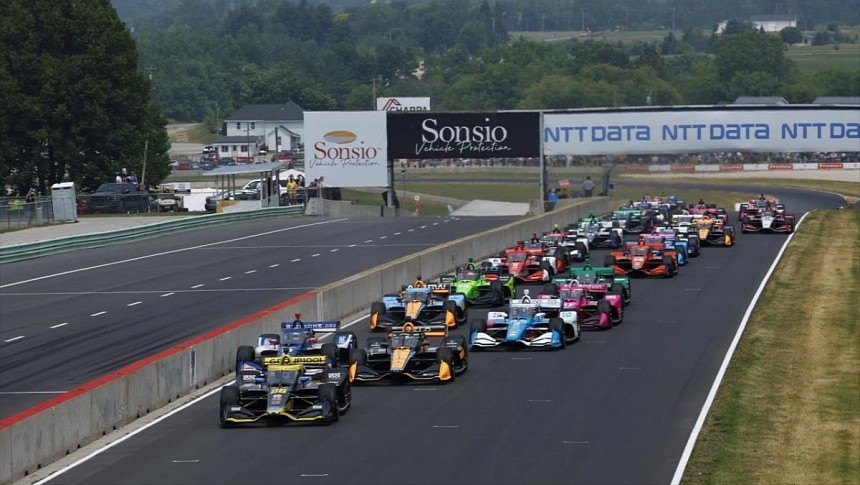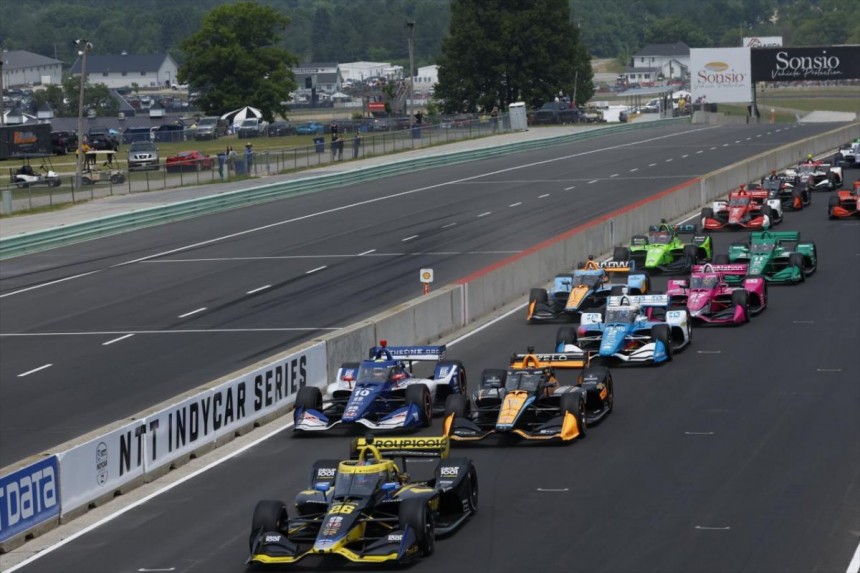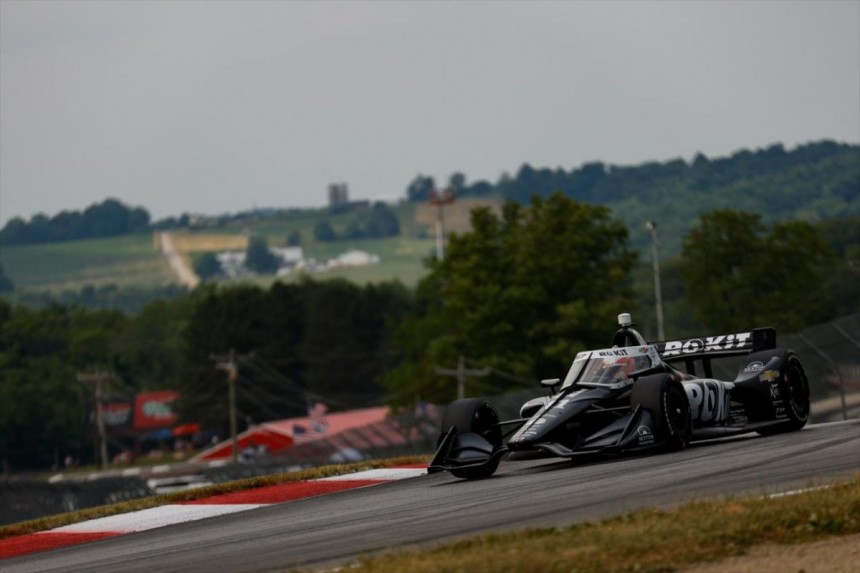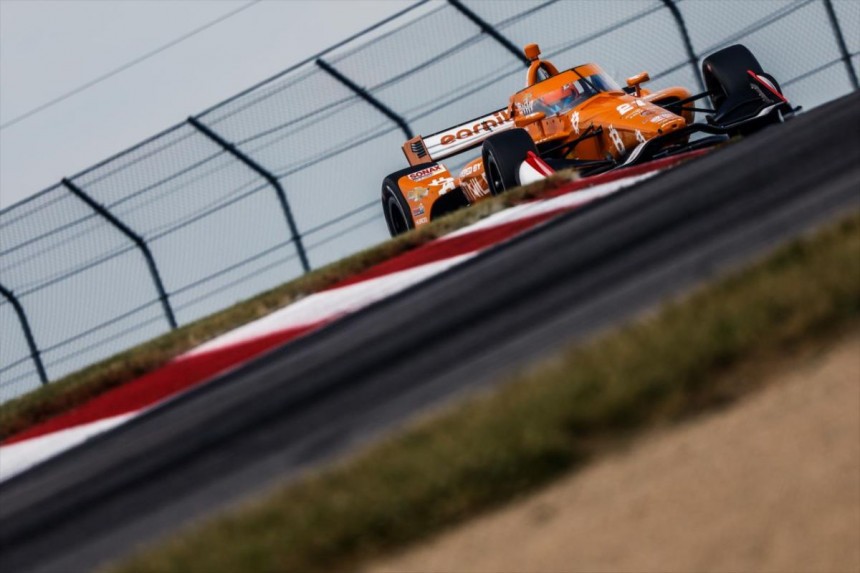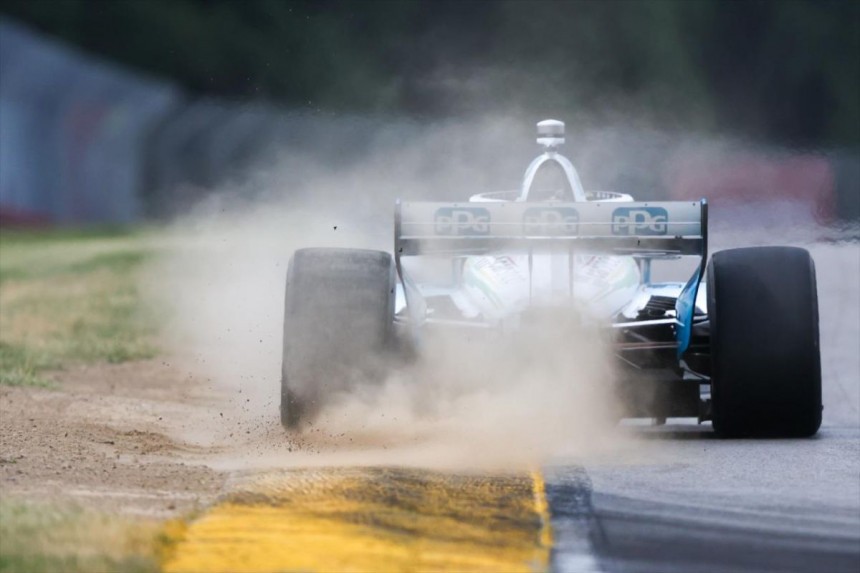Not so long ago, the NTT INDYCAR Series used to have a relatively quiet presence on festive holiday weekends, with the exception of Memorial Day. It was challenging as they grappled with tepid interest levels, subpar ratings, and attendance. In essence, their fan base was just not substantial enough.
Busy with familial gatherings, getaways, BBQ parties, and a buffet of other sporting events, INDYCAR's attempts to bring its races to the Fourth of July or Labor Day weekends usually faced an unceremonious fate. However, this narrative has been rewriting itself over the past few years. In 2020, INDYCAR marked Independence Day with a race on the Indianapolis road course. The event, held behind closed doors, was the first to feel truly fitting. In the following two years, they've managed to entertain considerable crowds in Mid-Ohio.
The present course of things shows promise, and if this trend carries on, Mid-Ohio could well become a regular feature on the Fourth of July INDYCAR schedule. It is, indeed, an opportune spot for success. The reshuffling of NASCAR's schedule, specifically their annual Fourth of July race in Daytona, created an opening for INDYCAR. For years, the Firecracker 400, now known as the Coke Zero Sugar 400, was the crowning jewel of the holiday weekend, an event that left no room for competition.
But when NASCAR shifted their focus, it allowed INDYCAR to enter the spotlight of the holiday weekend. The results have been fruitful. However, the question remains: Does INDYCAR wish to persist with this weekend, and would Mid-Ohio extend its hosting invitation? Previous endeavors to make this weekend a racing event, like Watkins Glen's attempts between 2007 and 2010, proved futile. After a five-year hiatus, when the race returned, it was in September. The Labor Day weekend deal never really took off either.
While holiday weekends might have been suited for Watkins Glen, they were never quite a success for INDYCAR, resulting in these weekends often being left unoccupied by races. But perhaps, the current scenario presents a different opportunity. For a holiday weekend race to thrive, you need a renowned location and a signature event. The formula has been proven successful with the Firecracker 400 in Daytona, Indianapolis 500 and Coca-Cola 600 on Memorial Day, and NASCAR's Southern 500 on Labor Day.
INDYCAR needs the perfect setting for a Fourth of July race to flourish. So far, Mid-Ohio appears to be a promising candidate. Chip Ganassi Racing is unequivocally the leading team in the series, both throughout the season and at Mid-Ohio. Their track record speaks volumes: winning half of the races this year, including three of the last four at Mid-Ohio.
However, their recent performance at this track has been shaky, with only a single victory in their last nine attempts. But that solitary win was an exhilarating one-two photo finish in 2019 between Scott Dixon and Felix Rosenqvist. Is this the moment for them to regain their Mid-Ohio prowess? Time will tell.
A six-time victor at Mid-Ohio, Dixon has only managed a single podium finish in his last nine appearances. Alex Palou, however, has secured third and second places, respectively, over the past two years, while Marcus Ericsson claimed a second and sixth place finish.
Interestingly, Palou has recently been on a winning streak, clinching victories in the last two seasonal races on natural road courses in 2023. The Honda Indy 200, intriguingly, has neglected its '200' label. It's not defined by 200 laps or 200 miles; indeed, it was only a 200-mile race from 1990-1993. Before then, it started as a 156-mile race in 1980, increasing to 202 miles between 1983-1989. From 1994-2001, it clocked a distance of 187 miles, returning to 202 miles in 2002 and 2003. Between 2007 and 2012, the distance was set at 85 laps or 202 miles, and then it was extended to 90 laps (203 miles) from 2013 through 2019. However, in 2020, the pandemic prompted a doubleheader weekend featuring two 75-lap races, each covering 169 miles.
In 2021, it returned to a single race weekend, but the distance was reduced to 80 laps or 181 miles, a configuration retained for the current year. So, which is the optimal distance? Currently, the game plan is a straightforward two-stopper. Attempting a three-stop strategy generally doesn't pay off. In fact, ten of the top 11 finishers last July used a two-stop strategy, with the third-place finisher, Will Power, being the exception due to an early lap spin that necessitated an additional pit stop. In 2021, 15 out of the top 16 finishers, including the entire top 12, executed a two-stop strategy.
The concept of 80 laps mirrors a sprint race. While some fuel conservation is necessary, it's a full-throttle race to the finish once you hit the window. A three-stop strategy could invite those on two stops to conserve fuel. With 90 laps, the addition of just ten laps is sufficient to warrant an extra stop. In 2019, two of the top three finishers opted for a three-stop strategy. The race victor, however, stuck to two stops. The top six were evenly split between two and three-stop strategies.
In 2018, Alexander Rossi won on a two-stop strategy, but the following 13 cars employed a three-stop strategy. This makes for a more dynamic race as it naturally creates opportunities for overtakes. It might be a bit more perplexing for the spectators, but it's a win-win situation in terms of strategy.
Some drivers would need to save fuel on two stints to make it to the end with one less stop, but others can go full tilt, knowing they might need an extra pit stop but could compensate by clocking faster laps. Last year was challenging for Andretti Autosport, marred by internal strife that cast a shadow over the organization. Can they bounce back this Sunday after a tough race in Road America, where they should have won?
Colton Herta believed he had the best car at the Sonsio Grand Prix at Road America. Starting on the pole and leading for most of the race, a faulty strategy call cost him the win and a spot on the podium. Herta led the pack for the first 11 laps before making his first pit stop. He regained the lead on the 13th lap, holding it until his second pit stop on lap 25, both during cautions. The slower stop on the second occasion cost him the lead and pushed him down to third. However, as Marcus Armstrong and Will Power did not pit, Herta found himself restarting from fifth.
Quickly recovering, Herta overtook Josef Newgarden on the 28th lap restart, and a lap later, Alex Palou regained the lead after the cycle. But a questionable call to pit on lap 40, with 15 laps remaining, required him to conserve fuel while the rest of the field could push to the finish. This caused him to drop down to fifth. It was a disappointing end for such a promising driver. The fact that he still hasn’t secured a podium this season and only has two top fives must be annoying to Michael Andretti.
Andretti Autosport spent the offseason trying to improve their strategy, but similar issues had crept up again, much like last year when Herta was leading the race but wasn't called to pit while INDYCAR was holding out to throw a caution to let the leaders pit. This cost Herta the race and a spot in the top ten.
Despite the disappointments, I wouldn't put much weight on his 13th and 15th place finishes over the last two years, considering his 2020 win and eighth and ninth place finishes before that. Meanwhile, Romain Grosjean's slump continues. After two poles and a third-place start in the first four races, he's been struggling. Despite a promising seventh-place finish in 2021, he’s had a string of underwhelming perform
Likewise, Kyle Kirkwood, who found himself in a first-lap crash in the first corner for the second consecutive race, still managed to finish in the top ten. This prompts the question: what if he could retain his starting position? His history at this track is formidable, with eight victories in nine attempts across various categories. Could one of them emerge victorious this Sunday?
However, despite promising performances, Grosjean's season has been marred by accidents when he was in pole position or had the lead. He crashed with two laps left in Texas and fell victim to poor strategy in Barber, finishing runner-up. Following a dismal Month of May and mediocre performances in Detroit and Road America, can the team recover and deliver a strong performance this Sunday? Only time will tell.
The present course of things shows promise, and if this trend carries on, Mid-Ohio could well become a regular feature on the Fourth of July INDYCAR schedule. It is, indeed, an opportune spot for success. The reshuffling of NASCAR's schedule, specifically their annual Fourth of July race in Daytona, created an opening for INDYCAR. For years, the Firecracker 400, now known as the Coke Zero Sugar 400, was the crowning jewel of the holiday weekend, an event that left no room for competition.
But when NASCAR shifted their focus, it allowed INDYCAR to enter the spotlight of the holiday weekend. The results have been fruitful. However, the question remains: Does INDYCAR wish to persist with this weekend, and would Mid-Ohio extend its hosting invitation? Previous endeavors to make this weekend a racing event, like Watkins Glen's attempts between 2007 and 2010, proved futile. After a five-year hiatus, when the race returned, it was in September. The Labor Day weekend deal never really took off either.
While holiday weekends might have been suited for Watkins Glen, they were never quite a success for INDYCAR, resulting in these weekends often being left unoccupied by races. But perhaps, the current scenario presents a different opportunity. For a holiday weekend race to thrive, you need a renowned location and a signature event. The formula has been proven successful with the Firecracker 400 in Daytona, Indianapolis 500 and Coca-Cola 600 on Memorial Day, and NASCAR's Southern 500 on Labor Day.
However, their recent performance at this track has been shaky, with only a single victory in their last nine attempts. But that solitary win was an exhilarating one-two photo finish in 2019 between Scott Dixon and Felix Rosenqvist. Is this the moment for them to regain their Mid-Ohio prowess? Time will tell.
A six-time victor at Mid-Ohio, Dixon has only managed a single podium finish in his last nine appearances. Alex Palou, however, has secured third and second places, respectively, over the past two years, while Marcus Ericsson claimed a second and sixth place finish.
Interestingly, Palou has recently been on a winning streak, clinching victories in the last two seasonal races on natural road courses in 2023. The Honda Indy 200, intriguingly, has neglected its '200' label. It's not defined by 200 laps or 200 miles; indeed, it was only a 200-mile race from 1990-1993. Before then, it started as a 156-mile race in 1980, increasing to 202 miles between 1983-1989. From 1994-2001, it clocked a distance of 187 miles, returning to 202 miles in 2002 and 2003. Between 2007 and 2012, the distance was set at 85 laps or 202 miles, and then it was extended to 90 laps (203 miles) from 2013 through 2019. However, in 2020, the pandemic prompted a doubleheader weekend featuring two 75-lap races, each covering 169 miles.
The concept of 80 laps mirrors a sprint race. While some fuel conservation is necessary, it's a full-throttle race to the finish once you hit the window. A three-stop strategy could invite those on two stops to conserve fuel. With 90 laps, the addition of just ten laps is sufficient to warrant an extra stop. In 2019, two of the top three finishers opted for a three-stop strategy. The race victor, however, stuck to two stops. The top six were evenly split between two and three-stop strategies.
In 2018, Alexander Rossi won on a two-stop strategy, but the following 13 cars employed a three-stop strategy. This makes for a more dynamic race as it naturally creates opportunities for overtakes. It might be a bit more perplexing for the spectators, but it's a win-win situation in terms of strategy.
Some drivers would need to save fuel on two stints to make it to the end with one less stop, but others can go full tilt, knowing they might need an extra pit stop but could compensate by clocking faster laps. Last year was challenging for Andretti Autosport, marred by internal strife that cast a shadow over the organization. Can they bounce back this Sunday after a tough race in Road America, where they should have won?
Quickly recovering, Herta overtook Josef Newgarden on the 28th lap restart, and a lap later, Alex Palou regained the lead after the cycle. But a questionable call to pit on lap 40, with 15 laps remaining, required him to conserve fuel while the rest of the field could push to the finish. This caused him to drop down to fifth. It was a disappointing end for such a promising driver. The fact that he still hasn’t secured a podium this season and only has two top fives must be annoying to Michael Andretti.
Andretti Autosport spent the offseason trying to improve their strategy, but similar issues had crept up again, much like last year when Herta was leading the race but wasn't called to pit while INDYCAR was holding out to throw a caution to let the leaders pit. This cost Herta the race and a spot in the top ten.
Despite the disappointments, I wouldn't put much weight on his 13th and 15th place finishes over the last two years, considering his 2020 win and eighth and ninth place finishes before that. Meanwhile, Romain Grosjean's slump continues. After two poles and a third-place start in the first four races, he's been struggling. Despite a promising seventh-place finish in 2021, he’s had a string of underwhelming perform
However, despite promising performances, Grosjean's season has been marred by accidents when he was in pole position or had the lead. He crashed with two laps left in Texas and fell victim to poor strategy in Barber, finishing runner-up. Following a dismal Month of May and mediocre performances in Detroit and Road America, can the team recover and deliver a strong performance this Sunday? Only time will tell.
